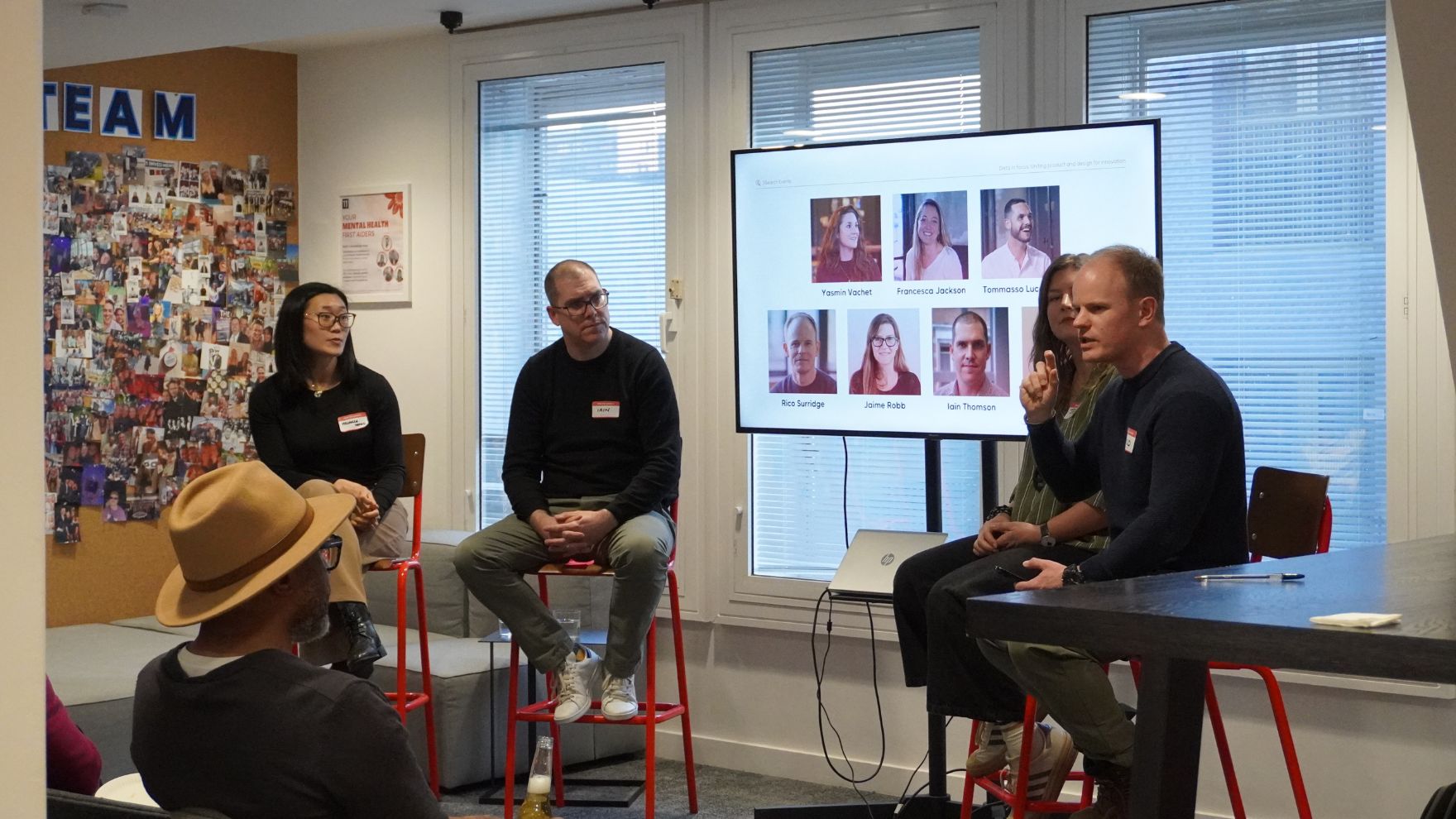Upload Your CV
Send us your CV and a member of the team will be in touch to discuss open opportunities with you.
In a world where data is at the heart of almost every decision, our latest Product x Design ...

In a world where data is at the heart of almost every decision, our latest Product x Design event explored the role that it plays in the industry. This article reveals the key takeaways from the Product, Design and Data Leaders who shared their thoughts with us. Keep reading to learn more about their integration.
On Wednesday, 26th March 2025, our specialist product and design recruiters held the next event in their collab series. This time joined by our data specialist recruitment consultant, Tommaso Lucentini, they brought together the following leaders:
Together they shared their thoughts on the following topics:
Their conversation was expertly moderated by Rico Surridge, former Chief Product & Technology Officer at Which? Keep reading for the key takeaways from their conversation.
As product and design functions become increasingly integrated, data plays an increasingly crucial role. It is actively supporting informed decision-making, identifying user needs, and validating ideas.
At our previous event around product and design balance, Product Leader, Brian Flanagan, shared his analogy of a four-legged stool to describe the relationship. Brian argued that each function has equal value. By removing or weakening one element of the product strategy, you lose your balance. Illustration of a stool with four colored legs labeled as Product (pink), Design (gold), Engineering (green), and Data (blue), representing a balance in team collaboration.

By bringing them into the same room, our product, digital design and data networks could discuss how to create balance and encourage collaboration.
With 'balance’ in mind, our speakers first discussed how to structure product, design and data teams.
These questions and more were debated.
To kick things off, we asked whether each skill set needs to have a seat at the boardroom table. Rico asked, “Do you need a seat at the top to be taken seriously?”
While Chief Data Officers (CDO) are becoming increasingly common, they’re most often found in companies with $50 billion+ revenues. Michelle Wong shared that the value of a CDO often depends on the data maturity of a business. If an organisation has a strong, data-driven culture (with data literate business leaders) there is a lower requirement to have a CDO. In these instances, the data team already have advocates across the business’ leadership team.
When making that first hire, it can be tricky to know which team the new employee should join. This is especially true when it comes to data. Wherever they go, you’ll find other departments becoming nervous about how the resource is used. Data silos are a challenge commonly faced by companies.
Iain Thomson argued that before worrying about hierarchy, you need someone advocating for the function. This is the key to breaking down those siloes from the very beginning. Iain shared, “I advocate for data across the business and in senior leadership team meetings.”
“Advocacy is the most important thing.”
Our speakers agreed that for data to be integrated across the business, it’s incredibly important to have advocates that are passionate about data collection and insights. For effective data integration, it’s not just about who reports to whom. It’s about whether there’s a shared understanding of what good looks like and the power to act on it.
With so much information and different types of data now available, our speakers debated whether it’s more a help or hindrance within design. Rico questioned, “Should you prioritise art or science?”
While you can’t A/B test to the next breakthrough product, you must recognise where data fits in design processes. Jaime Robb shared how important it is for Designers to be commercially aware and data literate. This empowers them to recognise the right opportunity to leverage data insights.
“You can’t A/B test your way into innovation.”
Data should inform and not dictate creative processes. It plays a vital role in:
Insights and data should not be counted out of the design process to build successful products.
As a skill set, ‘data literacy’ is increasingly important for Digital Designers. Designers must be able to confidently communicate:
Jaime is actively working to upskill her team in data literacy to support their career growth.
One key question our speakers focused on was whether you need data maturity for a successful product strategy. Rico asked, “What comes first, strong data insights or a clear product vision?”
Unsurprisingly, the question isn’t a simple one to answer. There are many factors that can influence your approach – company size being critical.
In early-stage businesses, data often follows product. With little user behaviour to analyse, teams rely on instinct, experience, and qualitative insight to get something into market.
“Sometimes your data is five customer interviews. That’s better than no data at all.”
But as a product matures, so does its dataset. That’s when things shift. Larger organisations can use data to identify opportunities, test hypotheses and shape the product roadmap. In these environments, data moves from reactive to proactive, helping to drive innovation and not simply validate it.
The panel warned against using data in isolation. Data can highlight patterns, but it rarely tells you what to build. The vision, strategy and customer feedback all remain essential to decision making.
Ultimately, the best outcomes come when insight and intuition work together, informing each other throughout the product lifecycle.
We want to extend a huge thank you to our speakers for their time and contributions to the discussion. It was a truly insightful evening. If you missed out and would like to join us at our next event, you can register your interest here.
Are you ready to invest in data? Do you need to expand your product management team? Or perhaps you need more design resource? Get in touch with our expert recruiters to find out how we can support your growth!